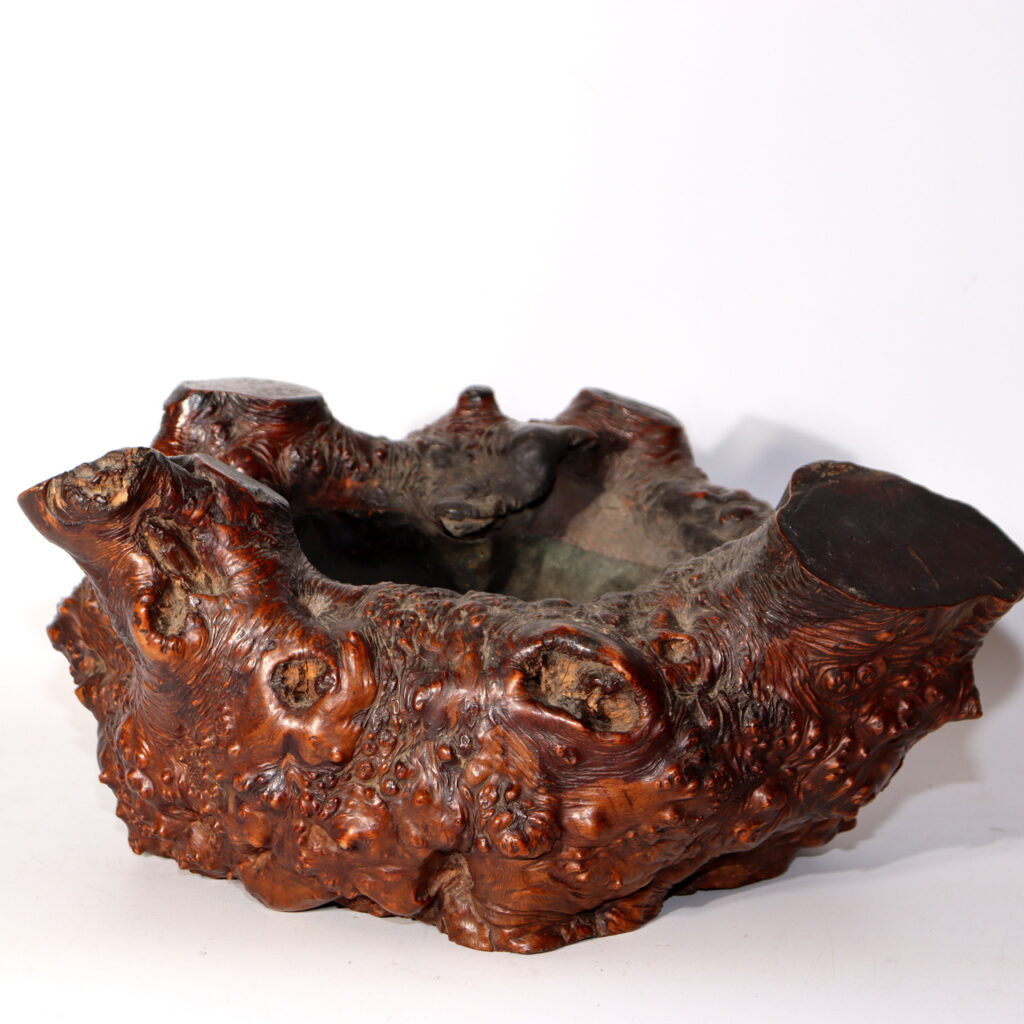
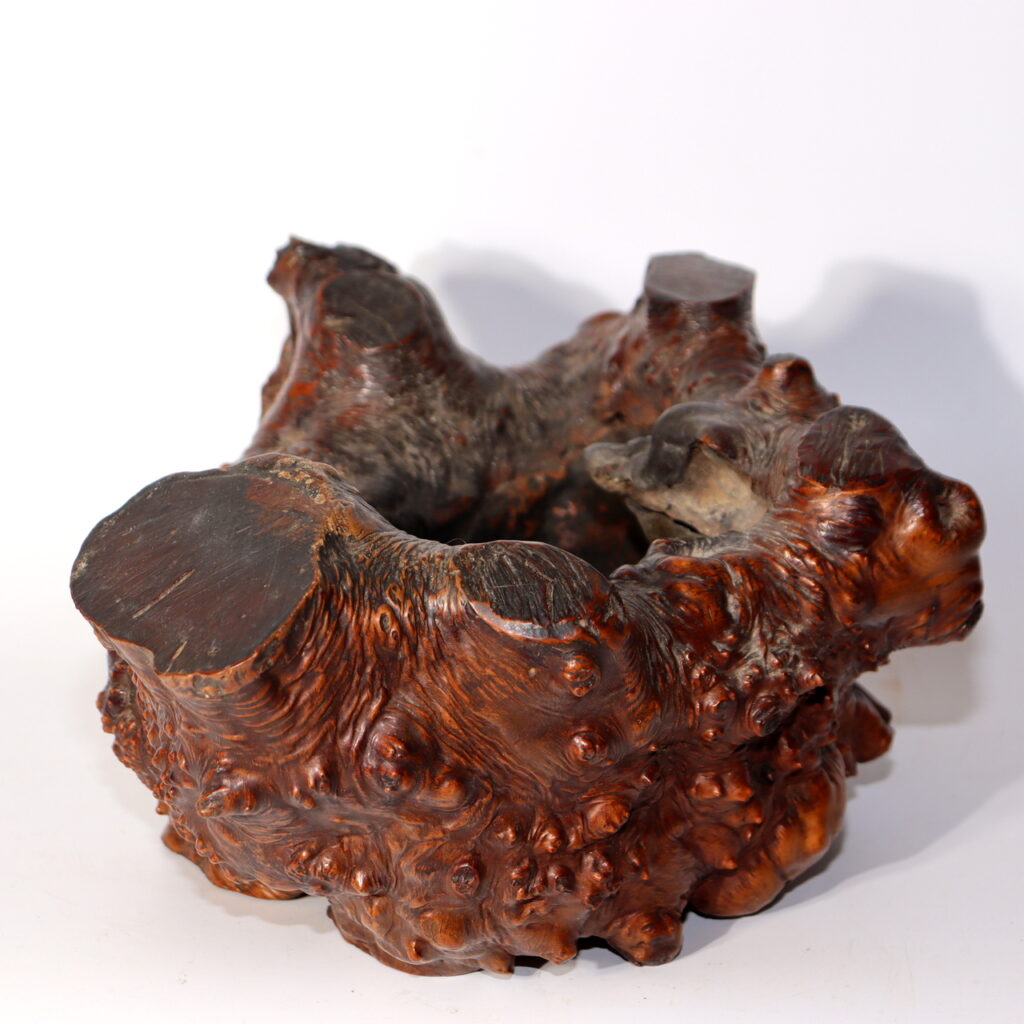
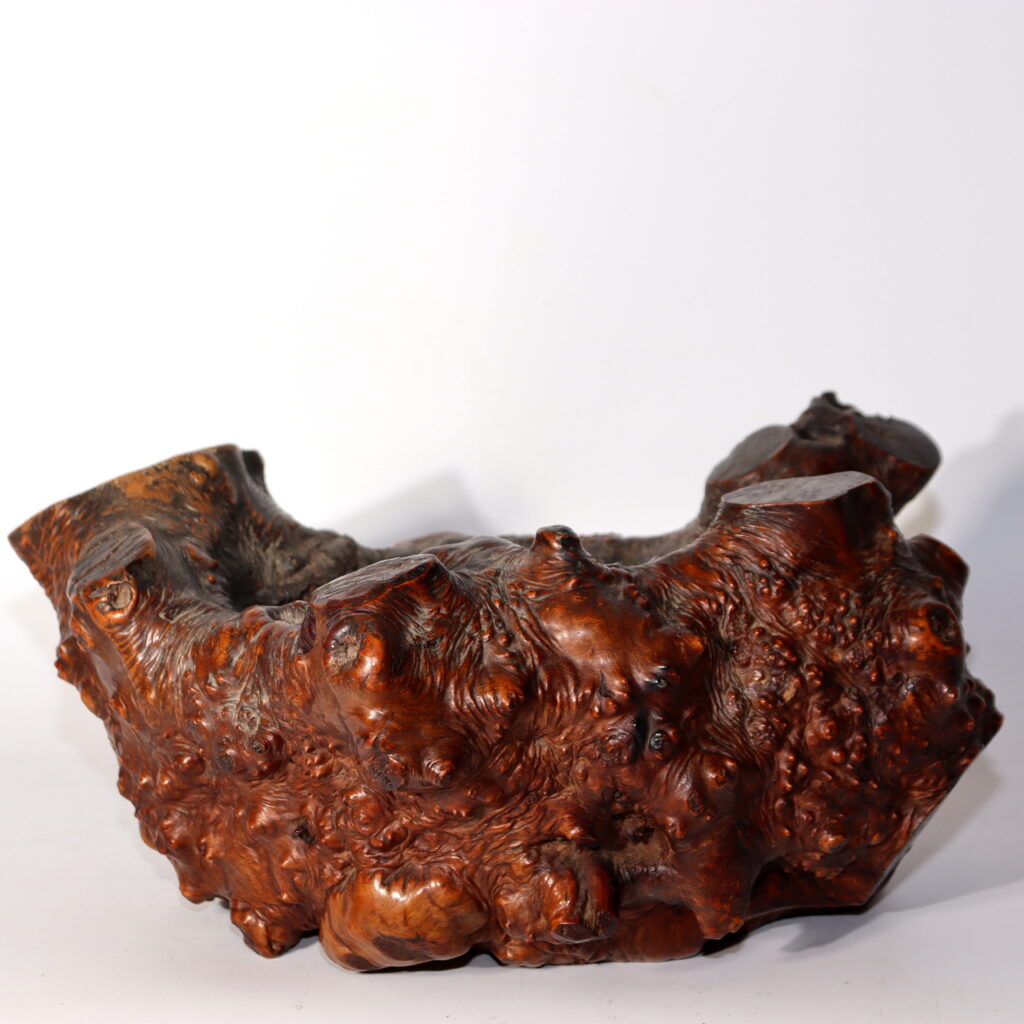
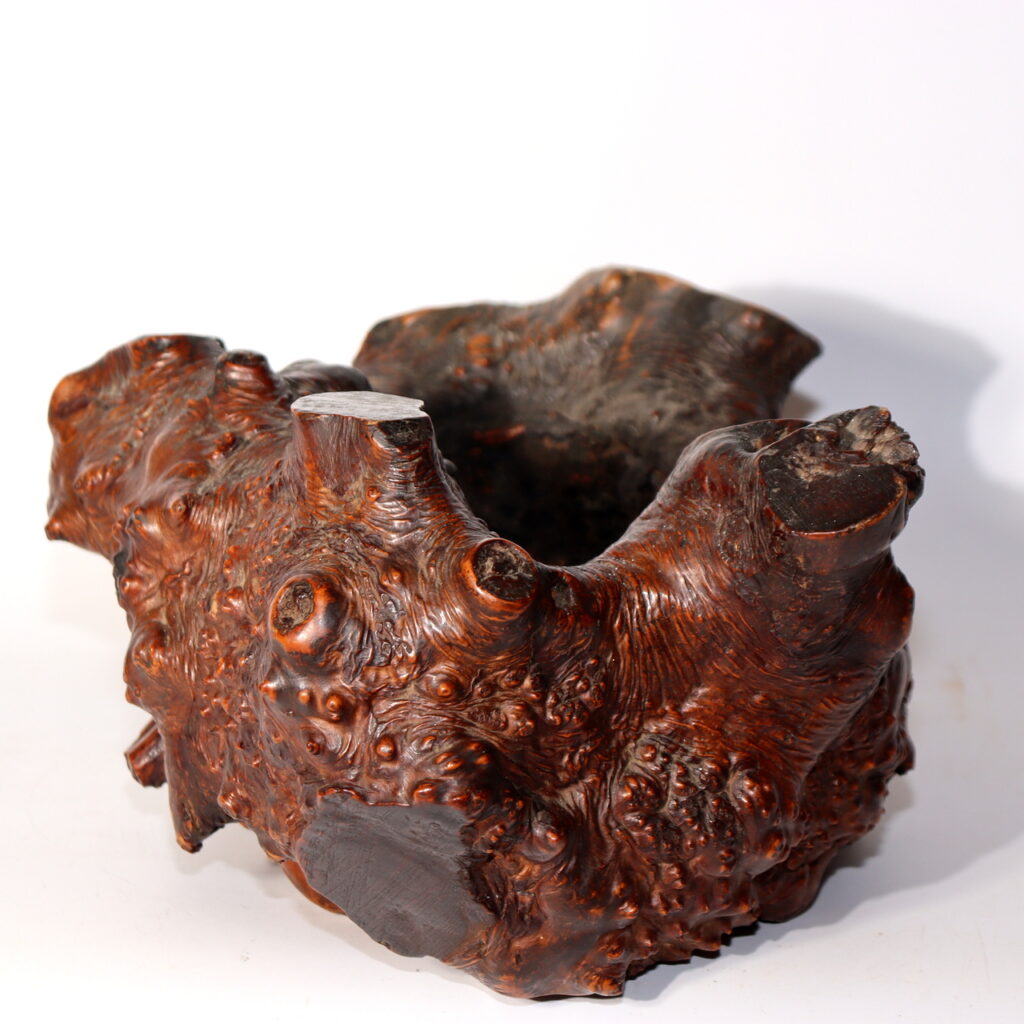
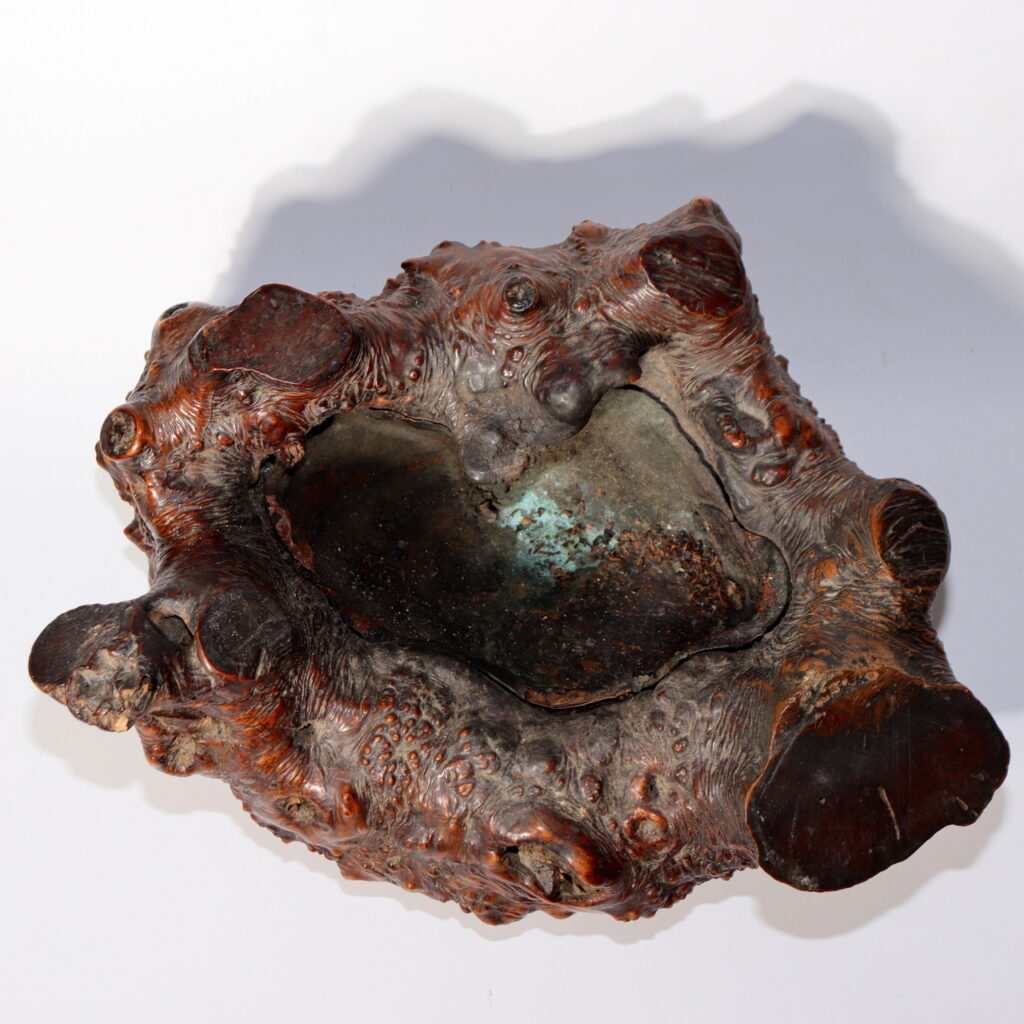
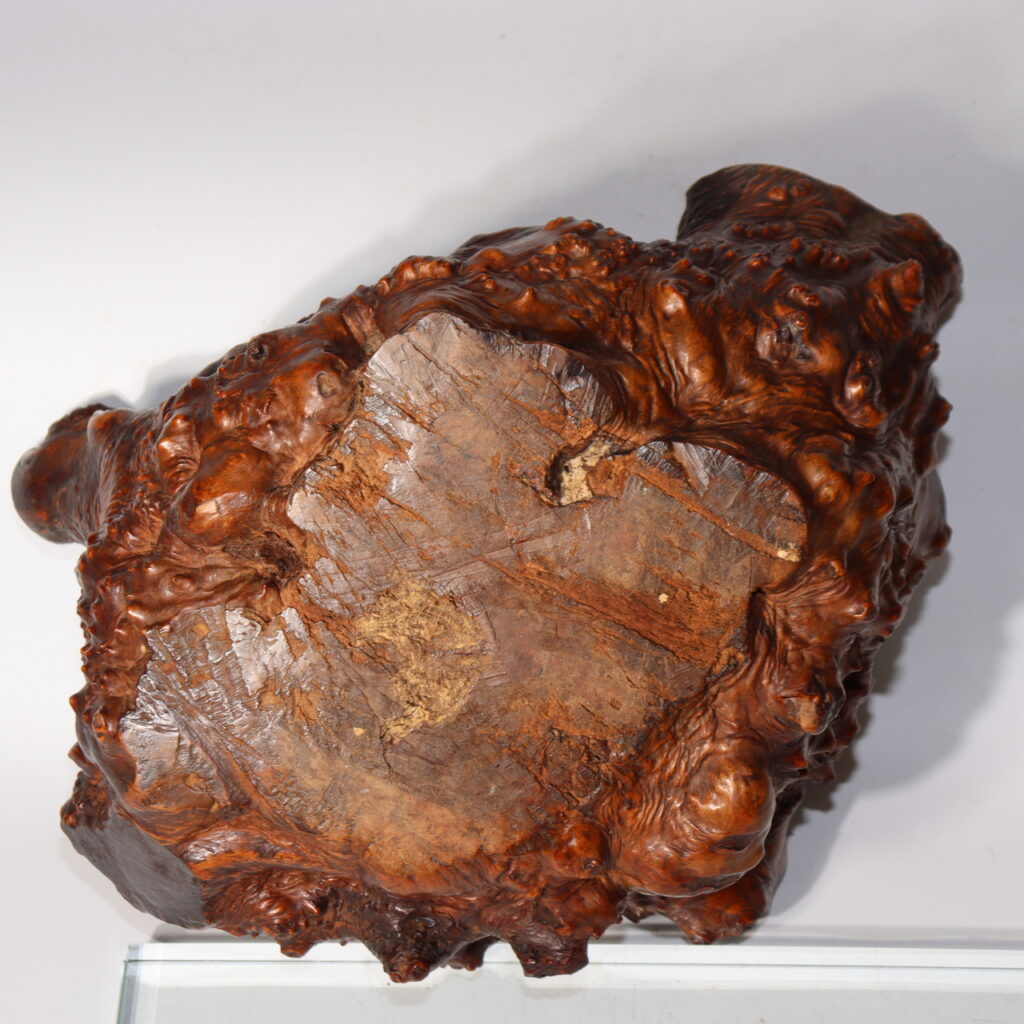
In the world of Japanese antiques, few items so effortlessly bridge the gap between art and nature as this natural wood display object. Handcrafted from tamamoku—a richly grained burl wood—this one-of-a-kind piece speaks to the enduring Japanese appreciation for organic forms, asymmetry, and wabi-sabi beauty.
The Story Behind This Natural Form
In Japanese tradition, nature is not merely a backdrop—it is a teacher, a source of spiritual insight, and an artist in its own right. From the moss-covered stones of a Zen garden to the gnarled trunk of an old pine, irregular forms are revered as expressions of time, imperfection, and uniqueness.
This natural wood display object, likely dating to the late Meiji or early Showa period, continues this lineage. Its material—tamamoku, or burl root—forms in response to stress, injury, or disease in the tree, resulting in swirling, unpredictable grain patterns. In this sense, each burl carries a history of its own—a record of resilience and transformation.
Features and Artistic Highlights
What sets this object apart is its fusion of function and sculpture. It invites the viewer to appreciate not only the form but also the subtle choices made by the artisan:
- Material: Japanese burl wood (tamamoku) with intense swirling grain and root texture
- Center Detail: Fitted copper plate, traditionally used as a tobacco ashtray (haizara)
- Shape: Natural, asymmetrical form with flowing contours and organic edges
- Craftsmanship: Carefully sanded and polished to enhance both visual and tactile appeal
This item is ideal as a bonsai stand, incense burner platform, or object base for treasured pieces of ceramic or bronze. Alternatively, it can be appreciated simply as a natural sculpture—an accent piece in interiors inspired by Zen philosophy, Japanese minimalism, or mid-century organic modernism.
Why Collectors Appreciate This Piece
For international collectors and interior stylists, this display object offers rare versatility and authenticity:
- It fits seamlessly into wabi-sabi spaces and homes seeking quiet, organic elegance
- It appeals to those fascinated by Japanese folk art, sculpture, and nature-based décor
- It is a true one-of-a-kind object, shaped as much by nature as by the craftsman’s hand
- It reflects Japanese aesthetic values that are increasingly celebrated in global design movements
As Japanese antiques grow in recognition for their timeless minimalism, such pieces offer both collectible and decorative value.
Conclusion: More Than a Display—A Conversation with Nature
This natural wood tamamoku ornament is more than an object—it is a dialogue between nature’s chance and human intention. Whether used as a functional stand or a quiet meditation piece, it brings texture, warmth, and depth to any space.
🌀 If sold out, browse similar natural wood and folk art pieces here:
🔗 https://koedo-sun-art.com